Georgia, our golden retriever, had always been a beacon of warmth and affection. Her boundless energy and playful spirit filled our home with infectious joy. But recently, a deep sadness had settled over her. She had given birth to a litter of puppies, only to have them tragically taken away due to health complications. The silence in the house, once filled with the yipping and playful nips of her pups, was deafening.
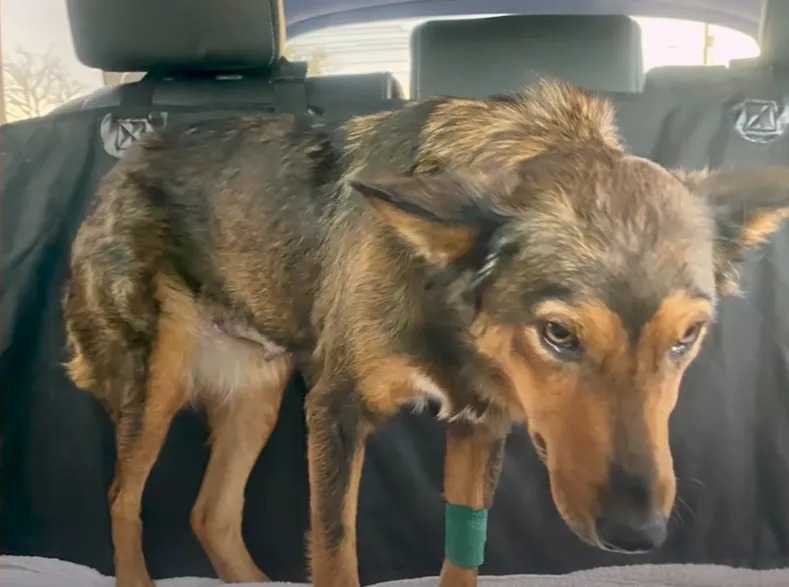
We watched as Georgia paced restlessly, her whines echoing through the empty rooms. Her maternal instincts, still potent, were searching for an outlet, a purpose. We knew we had to do something to ease her heartache. The idea struck us – perhaps another litter in need of a mother could fill the void in her heart.

With a glimmer of hope, we turned to social media, posting a message about our situation. We were looking for orphaned kittens, hoping to find tiny lives that could benefit from Georgia’s nurturing spirit. The response was overwhelming. People shared our post, offering words of sympathy and stories of kittens in need.

Within a day, we found ourselves driving to a nearby shelter. Three tiny balls of fluff, barely a week old, meowed pitifully in a makeshift incubator. Their eyes were barely open, their tiny bodies fragile and vulnerable. As we brought them home, a nervous anticipation filled the air.
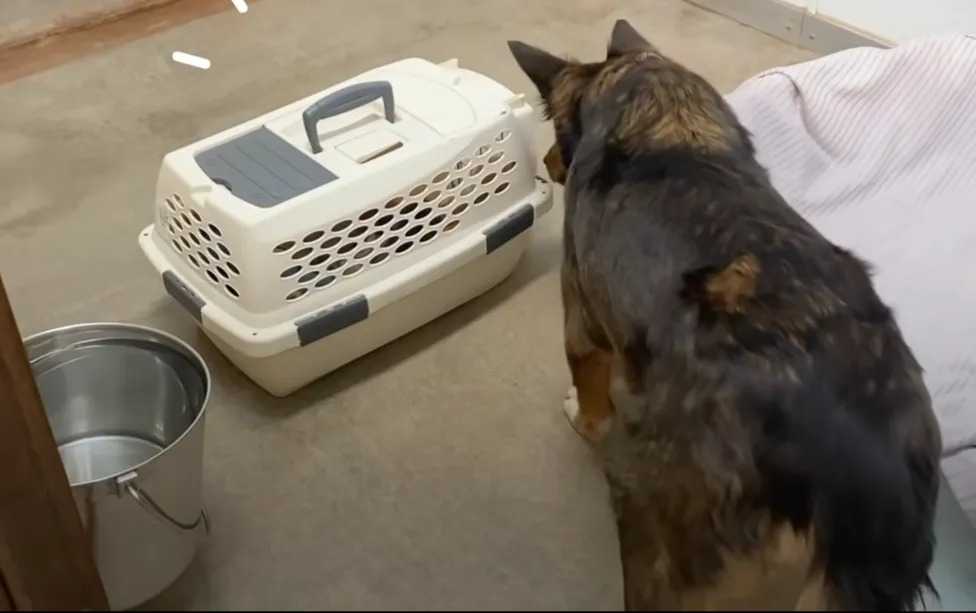
Placing one kitten at a time near Georgia, we held our breath. To our astonishment, Georgia’s demeanour shifted instantly. Her tail thumped against the floor in a gentle rhythm, her whines replaced by soft coos. She nuzzled the kittens with her nose, her warm breath washing over their delicate fur. The motherly instinct, once directed at her pups, now embraced these vulnerable creatures with the same intensity.
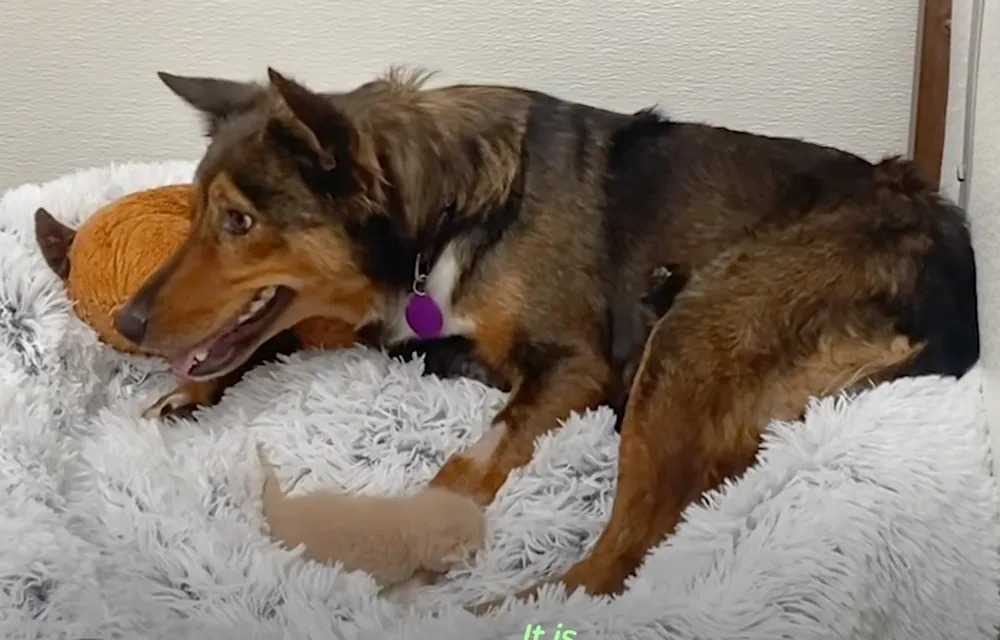
Georgia took to her new role with remarkable ease. She would meticulously clean them, her rough tongue a comforting caress. She patiently waited as they fumbled at her teats, their tiny bodies finding solace in her warmth. The house, once filled with the silence of grief, was now alive with the soft purrs and contented sighs of the kittens.
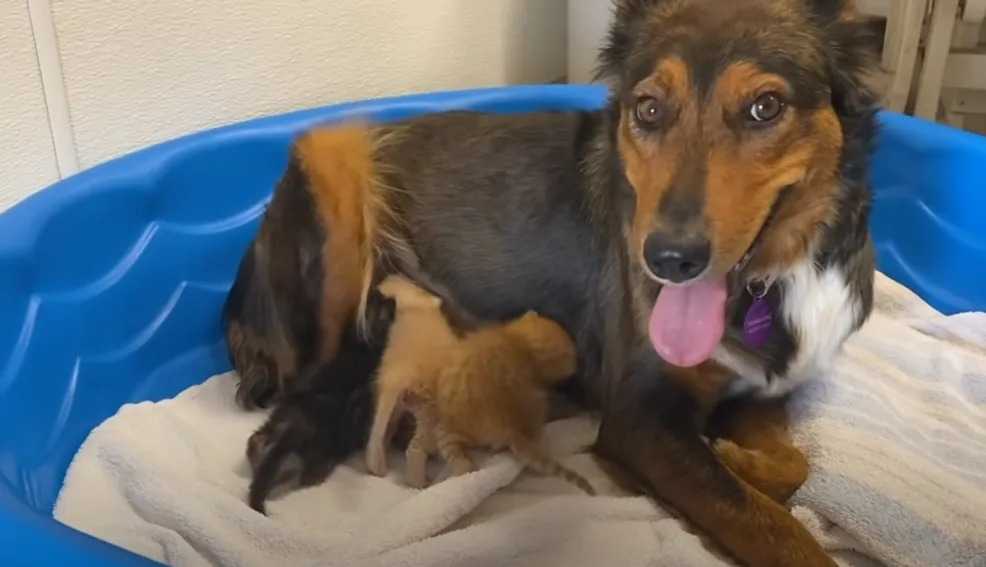
As the days turned into weeks, Georgia and the kittens formed an unbreakable bond. They slept cuddled together in a pile of soft blankets, their rhythmic breathing a lullaby of shared comfort. Georgia, once mourning the loss of her own, had become a beacon of love and care for these orphaned souls.
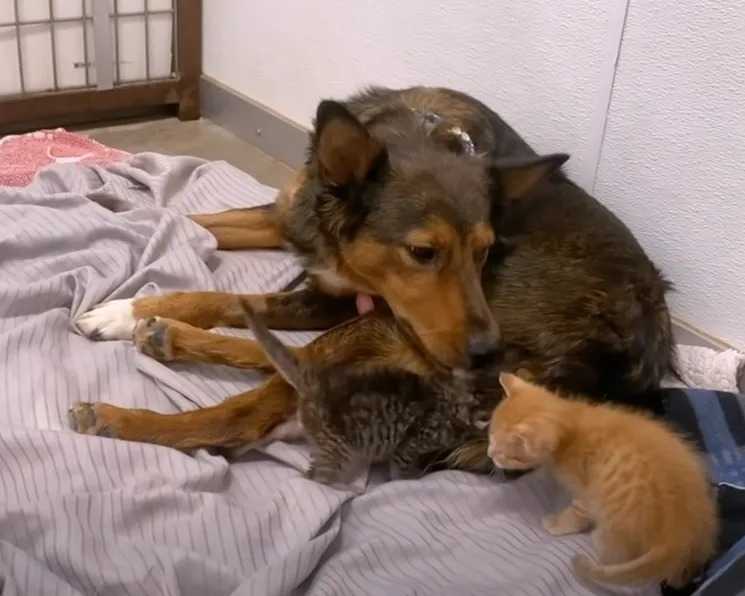
Watching them together was a testament to the incredible capacity for love that animals possess. It transcended the boundaries of species, a raw and beautiful display of maternal instinct overcoming the limitations of biology. Georgia, our grieving dog, had become an unlikely mother, offering a second chance at life to three fragile kittens. Their story, a heartwarming tapestry woven from loss and unexpected love, filled our home with a joy that resonated far deeper than we ever imagined.
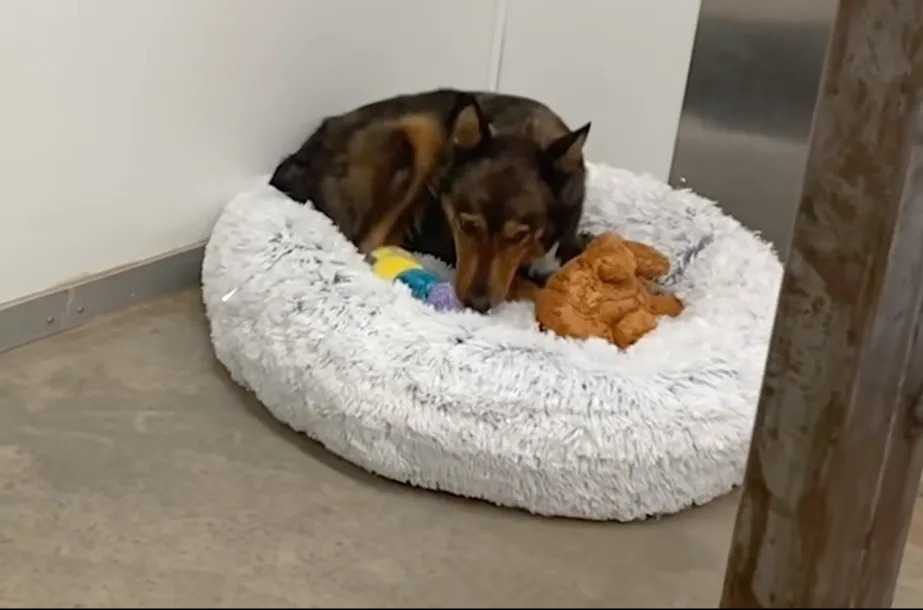
Watch The Full Video Here:
If you’ve ever noticed your furry friend’s nose feeling a bit dry, you might be wondering what’s going on. A dog’s nose is usually moist and cool, so a dry nose can raise some concerns. As a seasoned dog enthusiast, you’re no stranger to keeping a close eye on your pet’s well-being.
Your pup’s nose is more than just a cute feature – it plays a crucial role in their health and communication. Understanding the reasons behind a dry nose can help you better care for your canine companion. So, let’s take a closer look at what could potentially be causing your dog’s nose to feel dry.
Understanding the Normal State of a Dog’s Nose
When it comes to your furry friend’s nose, understanding what’s normal is key. A healthy dog’s nose is usually slightly wet and cool to the touch. This moisture helps them trap scent particles, aiding in their amazing sense of smell.
Dogs’ noses play a crucial role in maintaining their overall health. The moisture on their nose can help them regulate body temperature and stay hydrated. So, keeping an eye on any changes in their nose condition is essential for their well-being.
A dog’s nose can vary throughout the day, with factors like environmental changes or activity levels affecting its moisture level. It’s perfectly normal for your dog’s nose to change from wet to dry and back again. However, if you notice a persistent dryness in your dog’s nose or accompanying symptoms like flakiness or cracking, it might be worth consulting your vet.
Understanding what’s normal for your dog’s nose is crucial for monitoring their health. While some fluctuations in moisture levels are typical, consistent dryness could indicate an underlying issue that needs attention. Keep an eye on your pup’s nose, as it can provide valuable insights into their well-being.
Common Reasons for a Dog’s Dry Nose
1. Normal Variation:
A dog’s nose moisture levels can fluctuate throughout the day, just like humans’ skin changes in hydration levels. It’s normal for your dog’s nose to go from wet to dry and back again without any concern. Keep an eye on other symptoms accompanying the dry nose to ensure it’s just a temporary variation.
2. Environmental Factors:
Dry air, either due to seasonal changes or indoor heating, can cause your dog’s nose to dry out. Ensure your pup has access to areas with proper humidity levels or consider using a humidifier at home to prevent their nose from getting too dry.
3. Sun Exposure:
Just like humans, excessive sun exposure can lead to dryness on your dog’s nose. If your furry friend enjoys spending time outdoors, ensure they have shade to retreat to and consider dog-safe sunscreens to protect their nose from getting overly dry.
4. Allergies:
Allergies can also be a culprit behind your dog’s dry nose. Environmental allergens or specific food allergies can cause dryness in the nasal area. If you notice persistent dryness along with other allergy symptoms like itching or redness, consult your vet for appropriate management.
5. Medical Conditions:
Certain medical conditions, such as autoimmune diseases or skin disorders, can manifest as a dry nose in dogs. If you observe prolonged dryness accompanied by other concerning signs like lethargy or changes in behaviour, seeking veterinary advice is crucial to rule out any underlying health issues.
Please note that while occasional dryness in your dog’s nose is usually normal, consistent dryness or unusual symptoms warrant a vet visit for proper evaluation and care. Regular monitoring of your dog’s nose health is essential for detecting any potential health issues early on.
Signs of Serious Health Issues Related to a Dry Dog’s Nose
1. Cracks or Sores
Watch out for any cracks or sores on your dog’s dry nose. These can indicate more serious health issues like infections or autoimmune diseases. If you notice persistent cracks or sores, it’s essential to seek veterinary advice promptly.
2. Nasal Discharge
Keep an eye on any unusual nasal discharge accompanying the dry nose. Discharge that is bloody, thick, or colored can be a sign of infection, allergies, or other underlying health problems. Consulting a vet is vital if you observe abnormal nasal discharge.
3. Changes in Nose Texture
Pay attention to any changes in the texture of your dog’s nose. A dry nose that becomes excessively rough or crusty may point towards health concerns such as dermatitis or systemic diseases. If you notice such changes, consult your vet for a thorough evaluation.
4. Persistent Dryness
If your dog’s nose remains consistently dry over an extended period despite efforts to moisturize it, it could be a red flag for an underlying health issue. Persistent dryness may indicate conditions like dehydration, hyperkeratosis, or nasal disorders, requiring professional intervention.
5. Behavioral Changes
Monitor your dog for any unusual behavioral shifts accompanying the dry nose. A lethargic or disinterested demeanor, changes in appetite, or excessive licking of the nose can be indicative of potential health problems. If you observe such changes, consult with your veterinarian promptly.
Conclusion
Maintaining vigilance over your dog’s nose health is crucial in detecting potential health issues early on. Keep a close eye on any concerning signs such as cracks, discharge, texture changes, persistent dryness, or behavioral alterations. Seeking timely veterinary care for your furry companion is key to addressing any underlying health issues associated with a dry nose.
Treating and Preventing Dryness in a Dog’s Nose
Humidify the Air
Consider using a humidifier in your home to keep the air moist, especially during dry seasons or in arid climates. This can help prevent your dog’s nose from drying out.
Regularly Apply Dog-Safe Balms
Apply a vet-recommended, dog-safe balm or moisturizer to your furry friend’s nose to keep it hydrated. Look for products specifically designed for dogs to prevent any potential toxicity issues.
Stay Hydrated
Ensure your pup drinks an adequate amount of water throughout the day. Proper hydration can help maintain moisture not only in the nose but also in the entire body, promoting overall health.
Consult Your Vet
If you notice persistent dryness, cracking, or other concerning changes in your dog’s nose, consult your veterinarian. They can provide a proper diagnosis and recommend suitable treatments if needed.
Protect from Sun Exposure
Just like humans, dogs can get sunburned, especially on their nose. Limit your dog’s sun exposure, particularly during peak sun hours, and consider using pet-safe sunscreen to prevent nose dryness and sun damage.
Maintain a Healthy Diet
A balanced diet rich in essential nutrients like omega-3 fatty acids can contribute to your dog’s skin and nose health. Speak to your vet about the best diet for your furry companion.
Avoid Irritants
Keep your dog away from potential irritants like harsh chemicals, smoke, and other environmental factors that can dry out their nose. Providing a clean, safe environment can help prevent dryness.
Regular Health Check-ups
Routine veterinary check-ups are essential for monitoring your dog’s overall health, including their nose condition. Regular visits can help catch any potential issues early on.
Climate Considerations
Be mindful of how weather changes can affect your dog’s nose. Adjust your care routine as needed based on seasonal variations to ensure your pup’s nose stays healthy and moisturized.
Conclusion
You’ve learned the importance of your dog’s nose being moist for their scent detection and overall health. Remember, dryness could signal underlying health issues. By following the tips shared, like using humidifiers, applying dog-safe balms, and ensuring hydration, you can help maintain your furry friend’s nose health. Regular vet check-ups are crucial for persistent dryness. Protecting their nose from the sun, a healthy diet, and being mindful of irritants can go a long way. Consider your dog’s nose care in different climates. Stay proactive for your dog’s well-being!
Frequently Asked Questions
Why is a dog’s moist nose important for scent detection and health?
A dog’s moist nose helps them pick up scents more effectively and keeps their nasal passages moist for better breathing. It also serves as a barrier against harmful particles and bacteria, aiding in overall health and well-being.
What are the normal variations in a dog’s nose moisture levels?
It is common for a dog’s nose to have fluctuations in moisture levels throughout the day. Factors like hydration, environmental conditions, and individual differences can affect the moisture content in a dog’s nose.
What are the warning signs of serious health issues related to a dog’s nose?
Persistent dryness, crustiness, discoloration, excessive discharge, swelling, or sores on a dog’s nose may indicate underlying health problems such as infections, autoimmune diseases, or allergies. Consulting a vet is recommended for proper diagnosis and treatment.
How can I treat and prevent dryness in my dog’s nose?
To alleviate dryness in a dog’s nose, consider using humidifiers, applying dog-safe balms, ensuring proper hydration, protecting from sun exposure, maintaining a healthy diet, avoiding irritants, scheduling regular check-ups, and adapting care to climate variations for optimal nose health.